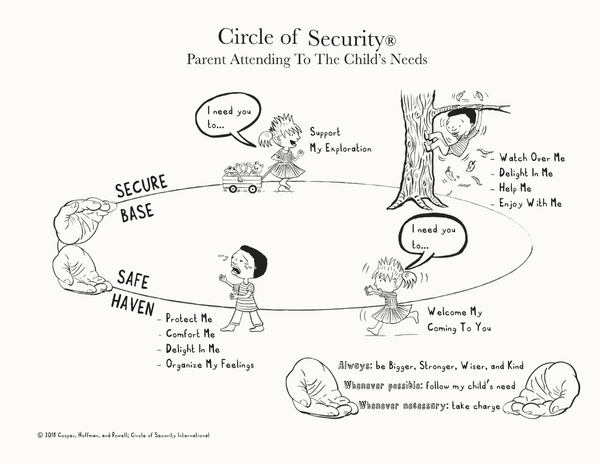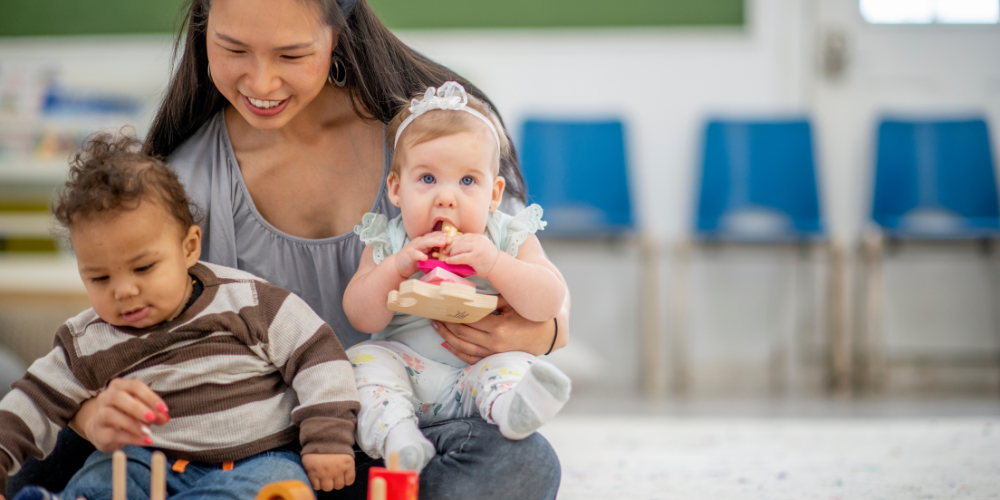Too often in ECEC I get the sense the complex and fascinating age group of birth to three is being oversimplified for a matter of convenience or survival of the early childhood practitioner. In the busy doing of meeting multiple needs at any given time, while also ticking off every checklist, documentation requirement and ensuring every child has their nappy changed every 2 hours, it is not hard to see why Educators never find the time to check back in with what babies and toddlers actually need from us. One need in particular that may be getting confused in the hustle and bustle of the day in a nursery classroom is the child’s need to be held. (both physically and emotionally) "Oh No No No" I hear the experienced educator protest; "They need to learn that we can't pick them up every time they cry." It is this very sentence that I have heard for over 18 years that has inspired this blog. Yes, it is true that a baby who relies on their adults to pick them up to be soothed may come to expect to be picked up in the future. But isn't that the point? Isn't that the baby learning to trust that someone has their back in this big and overwhelming world? Let me unpack this for you before you toss this reading to the side. I promise you I’m not ignorant to how hard it is to do the work of an Early Childhood Educator.
1. Attachment Science: Giving Them Wings to Explore
Decades and decades of attachment research has disproved the idea that you can spoil a baby. In fact, the research tells us that the more we respond to a baby's cues, the more secure that child will be. And you guessed it, the more secure they are, the healthy their brain wiring and thought patterns are. A baby that experiences this trust will be more likely to be okay spending time on the floor playing.
The Circle of Security roadmap clearly demonstrates how young children depend on a secure base to explore from as well as a safe haven to return to when they need comfort or reassurance. The more secure they feel with us, the more they're ready to spread their wings and check out the world around them. It's not about being overprotective; it's about being that dependable safety net that lets them take on the world.

The Circle of Security busts the fear that
"we will restrict their exploration/learning if we pick them up"
When educators do find time to hold babies, it's not uncommon that they share that they are worried that if they hold the baby, they are restricting the child's learning experience. Now, I would agree with that IF we were hanging onto babies who were sprawling their way out of our arms like my Pho noodles trying to escape my spoon. Holding children back from exploration is not helpful for anyone, but that's not what this blog or perspective is about. Of course, where children want to be held, we'd like to do so on the floor with them in our lap so they can move from us when they're ready.
It flips the narrative from
'If they want to be held a lot, work on putting them down more."
to the idea that
'The more we hold them, the safer they feel and the more likely they are to want to be on the floor "(because that is how their attachment system works)
Attaching in the First Year: Getting Sensory
Dr. Neufeld's insights hit me right in the feels – literally. Babies attach through their senses, and those cuddle sessions are crucial for healthy brain development. Sight, scent, and touch – these are the secret ingredients for creating strong bonds with our little people. Being connected through proximity isn't just a nice idea; it's a sensory necessity for them to feel safe and content. Being away from their primary caregiver means we need to step up to the plate and offer the opportunity for children to attach to us through being close to us. Its where professional love is an absolute must.
The best way to allow children to build their attachment through their senses is to work on a primary caregiving model where each educator has specific children that they plan to build this deep connection with. The practice of holding babies is crucial to enable this attachment through the senses

Erikson's Trust vs. Mistrust: Our Role in the Attachment Game
Erikson's trust versus mistrust theory. In the first years, our tiny humans are like little detectives, with their main inquiry - "can I trust you to meet my needs?" (emotionally as well as physically) It's not them learning who they can manipulate to pick them up (the part of the brain responsible for such manipulation is severely underdeveloped and incapable of this); it's the brains way of knowing whether it is safe or not. If they get a sense that they aren't safe, the crying will go on, until it may eventually give up which is a stress response, not the sign of settled in child.

Practice Ideas
- Efficient rostering to ensure the continuity of nursery educators, including those responsible for covering planning and lunch breaks.
-
The '1 up' practice: A team approach to ensure that the majority of educators are actively engaging with children on the floor, while one person focuses on tasks such as preparing bottles or completing safety checklists. The purpose is to allow children's attachment systems to naturally guide them to come and go from your lap.

- An agreement that everyone slows down their whole day, this takes commitment from leaders as well. Highly structured routines and activities make "being with" babies difficult. Yes, we need efficient systems in place to help bring calm to the day as well, but these structures should be around organising belongings efficiently and ensuring that everyone gets their bottle etc. not about structuring babies to all do the same thing, at the same time.
-
Comfortable furniture in the room to encourage adults to be on the floor or at children's level. Adult-sized couches enable educators to slow down their practice to be with children and also reduce standing and holding (we've got to save our backs!).
-
Removing practices that are not child-centered or age-appropriate. Now that I've hopefully convinced you to hold onto those babies, you may be wondering, "How will I make time?" Removing whole group circle times is a start. How about sitting with small groups, singing, reading books, and allowing the children to come and go as they please? Say goodbye to highly adult-organised and prepared crafts. Elaborate play setups that took days to prepare are unnecessary; babies explore elements of materials as their way of play, and they don't need intricate small worlds or the like.

READY FOR MORE?
But what about our backs?
The misconception that holding babies is a bad habit that will end with an OHS back claim and screaming babies remains prevalent. It's not to say that Early Childhood Educators don't have their work cut out for them, but there is safe ways to hold babies, in our laps on the floor or while sitting on a couch/chair are obvious ones. When standing it is important to hold babies in our center, facing us to protect our back health. And as the theory suggests, the more we lean in, the more they trust us, the more their exploration part of the brain is activated. This means less needing to be held. Did I mention this isn’t about holding children all day everyday?
A word of caution
When we begin to lean into the need to be held, children may temporarily look like they are "getting worse". This is because they realise that you are someone who can meet that need for them. In the beginning they will want to reassure themselves of this by testing this idea out over and over again. Additionally, babies who have not received this kind of affection in your early learning space before will need their emotionally cup filled up for a little while. In time, once the trust is there, they can begin to take your responsiveness for granted, and that is where you will see the reward for your professional love.
Benefits
- Children will become more eager and settled in the classroom, going off on grand adventures.
- Babies will seek you out (over others) to meet their needs (and how lovely does that feel)
- You will have the time to get to know each child at a deeper level which brings us closer to families too.
- The atmosphere in the room slows down bringing more peace and harmony for everyone.
- You will know that you are contributing to this child's lifelong well-being outcomes.
A final word - We're crafting the beginning chapters of these children's stories. Let's embrace holding babies as crucial to our pedagogy – it's not just about creating a safe space but about building connections that last a lifetime.
Elise xo
Do you want Elise to visit your early learning setting? Find out more about Elise's Consultancy Support here.


